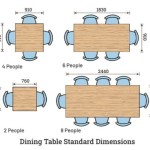How Much Does a 3/4 Inch Slate Pool Table Weigh?
Determining the weight of a 3/4 inch slate pool table involves considering several factors contributing to the overall mass. While the slate itself is a significant contributor, other components such as the frame, legs, rails, and cloth also add to the final weight. A comprehensive understanding of these elements is crucial to accurately estimate the weight of such a table.
Pool tables, especially those with slate beds, are known for their substantial weight. Slate provides a consistently flat and stable playing surface, essential for accurate ball roll and a professional playing experience. The use of 3/4 inch slate is common in many home and recreational pool tables, offering a good balance between cost and performance. However, this thickness still contributes significantly to the table's overall mass, necessitating careful handling during installation and relocation.
The Significance of Slate Thickness and Dimensions
The thickness of the slate directly correlates with its weight. A 3/4 inch slate bed provides a relatively rigid surface, but it's important to note that the dimensions of the slate also play a crucial role. Pool tables come in various sizes, typically measured by their playing surface dimensions, such as 7-foot, 8-foot, and 9-foot tables. Larger tables naturally require larger slate pieces, resulting in a proportionally heavier bed.
A standard 7-foot pool table, for instance, typically utilizes a three-piece slate design, with each piece measuring approximately 30 inches wide and 40 inches long. An 8-foot table will have larger slate pieces, and a 9-foot table even larger. These dimensions influence the total surface area of the slate, directly impacting its overall weight. Therefore, knowing the specific dimensions of the slate pieces is crucial for a more accurate weight estimation.
The choice of a one-piece versus a three-piece slate design can also affect the perceived ease of handling, although the total weight remains largely the same. A one-piece slate is heavier and more difficult to maneuver but may offer a perfectly seamless playing surface if properly leveled. Three-piece slates are easier to transport and install, as the weight is distributed across multiple pieces, but require careful seaming and leveling to ensure a smooth, continuous playing field.
Estimating Slate Weight Based on Table Size
While an exact figure requires knowing the specific dimensions of the slate, it's possible to provide a general estimate based on the table size. For a 7-foot pool table with 3/4 inch slate, the slate itself likely weighs between 400 and 500 pounds. An 8-foot table will have a heavier slate bed, typically ranging from 500 to 650 pounds. A 9-foot table with 3/4 inch slate can easily exceed 650 pounds for the slate alone.
These figures are estimates, and the actual weight may vary depending on the specific manufacturing process, the density of the slate used, and any additional materials applied to the slate, such as a backing material or fabric adhesive. It's always advisable to consult the manufacturer's specifications or product information for the most accurate weight data. If such information is unavailable, a professional pool table installer or retailer may be able to provide a more precise estimate based on their experience with similar tables.
Understanding these weight ranges is critical for planning the delivery, installation, and even the structural support of the room where the pool table will reside. Floors must be able to handle the concentrated weight of the table, especially in older homes or buildings with less robust construction. Reinforcements may be necessary to prevent sagging or other structural issues.
The Contribution of Other Table Components to Overall Weight
The slate is the heaviest single component of a pool table, but the other parts significantly add to the overall weight. The frame, typically constructed from hardwood or engineered wood products, provides structural support for the slate and the entire table. The legs, often made of solid wood or metal, bear the brunt of the table's weight and must be strong and stable. The rails, usually made of wood and covered with cloth and cushions, also contribute to the overall mass.
The weight of the frame can vary significantly depending on the type of wood used and the complexity of the design. Hardwoods like oak or maple are denser and heavier than softwoods like pine. Elaborate frames with intricate carvings or decorative elements will also add to the weight. Similarly, the design and materials used in the legs can influence the overall mass. Solid wood legs are generally heavier than metal legs, although the specific type of metal and its thickness will also play a role.
The cloth covering the slate and rails, while relatively lightweight on its own, adds a small amount to the overall weight. The cushions attached to the rails, typically made of rubber or synthetic materials, also contribute. Hardware such as bolts, screws, and staples, while individually insignificant, collectively add to the total weight of the table.
Taking all these components into account, a 7-foot pool table with 3/4 inch slate might weigh between 700 and 800 pounds in total. An 8-foot table could weigh between 800 and 1000 pounds, and a 9-foot table might exceed 1000 pounds. These are broad estimates, and the actual weight can vary significantly depending on the specific materials and construction of the table.
The distribution of weight is also a critical consideration. The majority of the weight is concentrated in the slate bed, but the frame and legs distribute this weight across the floor. The point loading, or the weight concentrated at each leg, must be considered when assessing the floor's load-bearing capacity. Wide, sturdy legs will distribute the weight more evenly than narrow, spindly legs.
When moving a pool table, it's essential to disassemble it as much as possible to reduce the weight of individual components. Removing the slate, rails, and legs significantly lightens the load and makes it easier to transport and maneuver the table. However, this requires specialized knowledge and tools, and it's often best left to professional pool table movers. Attempting to move a fully assembled pool table without proper equipment and experience can result in damage to the table, the surrounding environment, or personal injury.
Proper installation and leveling are also crucial for ensuring the longevity and playability of a pool table. An uneven playing surface can affect ball roll and lead to inaccurate shots. Professional installers use specialized leveling tools and techniques to ensure that the slate is perfectly flat and level, compensating for any imperfections in the floor. They also properly seam the slate pieces together, creating a smooth, continuous playing surface. This ensures that the table provides a consistent and enjoyable playing experience for years to come.

How Much Does A Pool Table Weigh Weight Of Slate

How Much Does A Pool Table Weigh Weight Of Slate

How Much Does A Pool Table Weigh Weight Of Slate

How Much Does A Pool Table Weigh Weight Of Slate

Best Advice How Heavy A Slate Pool Table Is Before You Buy

Pool Table Weight Everything You Wanted To Know Home Billiards S

Pool Table Weight Everything You Wanted To Know Home Billiards S

How Much Does A Pool Table Weigh Weight Of Slate
How Much Does A Slate Pool Table Weigh Quora
What Is The Weight Of A Pool Table Quora








